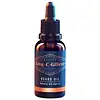What's inside
What's inside
 Key Ingredients
Key Ingredients

 Benefits
Benefits

 Concerns
Concerns

 Ingredients Side-by-side
Ingredients Side-by-side

Water
Skin ConditioningSodium Laureth Sulfate
CleansingGlycerin
HumectantCoco-Betaine
CleansingGlycol Distearate
EmollientGuar Hydroxypropyltrimonium Chloride
Skin ConditioningEucalyptus Globulus Leaf Oil
PerfumingTocopherol
AntioxidantSodium Chloride
MaskingSodium Benzoate
MaskingCedrus Atlantica Bark Oil
MaskingSodium Acetate
BufferingSodium Hydroxide
BufferingPPG-5-Ceteth-20
EmulsifyingPEG-55 Propylene Glycol Oleate
Salicylic Acid
MaskingPolyquaternium-10
Limonene
PerfumingFumaric Acid
BufferingMenthol
MaskingBenzyl Salicylate
PerfumingBenzyl Alcohol
PerfumingPentylene Glycol
Skin ConditioningMentha Piperita Extract
CleansingPropylene Glycol
HumectantIsopropyl Alcohol
SolventAlpha-Isomethyl Ionone
PerfumingParfum
MaskingCarbomer
Emulsion StabilisingFusanus Spicatus Wood Oil
MaskingOctyldodecanol
EmollientCitric Acid
BufferingCoumarin
PerfumingWater, Sodium Laureth Sulfate, Glycerin, Coco-Betaine, Glycol Distearate, Guar Hydroxypropyltrimonium Chloride, Eucalyptus Globulus Leaf Oil, Tocopherol, Sodium Chloride, Sodium Benzoate, Cedrus Atlantica Bark Oil, Sodium Acetate, Sodium Hydroxide, PPG-5-Ceteth-20, PEG-55 Propylene Glycol Oleate, Salicylic Acid, Polyquaternium-10, Limonene, Fumaric Acid, Menthol, Benzyl Salicylate, Benzyl Alcohol, Pentylene Glycol, Mentha Piperita Extract, Propylene Glycol, Isopropyl Alcohol, Alpha-Isomethyl Ionone, Parfum, Carbomer, Fusanus Spicatus Wood Oil, Octyldodecanol, Citric Acid, Coumarin
Ingredients Explained
These ingredients are found in both products.
Ingredients higher up in an ingredient list are typically present in a larger amount.
Parfum is a catch-all term for an ingredient or more that is used to give a scent to products.
Also called "fragrance", this ingredient can be a blend of hundreds of chemicals or plant oils. This means every product with "fragrance" or "parfum" in the ingredients list is a different mixture.
For instance, Habanolide is a proprietary trade name for a specific aroma chemical. When used as a fragrance ingredient in cosmetics, most aroma chemicals fall under the broad labeling category of “FRAGRANCE” or “PARFUM” according to EU and US regulations.
The term 'parfum' or 'fragrance' is not regulated in many countries. In many cases, it is up to the brand to define this term.
For instance, many brands choose to label themselves as "fragrance-free" because they are not using synthetic fragrances. However, their products may still contain ingredients such as essential oils that are considered a fragrance by INCI standards.
One example is Calendula flower extract. Calendula is an essential oil that still imparts a scent or 'fragrance'.
Depending on the blend, the ingredients in the mixture can cause allergies and sensitivities on the skin. Some ingredients that are known EU allergens include linalool and citronellol.
Parfum can also be used to mask or cover an unpleasant scent.
The bottom line is: not all fragrances/parfum/ingredients are created equally. If you are worried about fragrances, we recommend taking a closer look at an ingredient. And of course, we always recommend speaking with a professional.
Learn more about ParfumTocopherol (also known as Vitamin E) is a common antioxidant used to help protect the skin from free-radicals and strengthen the skin barrier. It's also fat soluble - this means our skin is great at absorbing it.
Vitamin E also helps keep your natural skin lipids healthy. Your lipid skin barrier naturally consists of lipids, ceramides, and fatty acids. Vitamin E offers extra protection for your skin’s lipid barrier, keeping your skin healthy and nourished.
Another benefit is a bit of UV protection. Vitamin E helps reduce the damage caused by UVB rays. (It should not replace your sunscreen). Combining it with Vitamin C can decrease sunburned cells and hyperpigmentation after UV exposure.
You might have noticed Vitamin E + C often paired together. This is because it is great at stabilizing Vitamin C. Using the two together helps increase the effectiveness of both ingredients.
There are often claims that Vitamin E can reduce/prevent scarring, but these claims haven't been confirmed by scientific research.
Learn more about Tocopherol